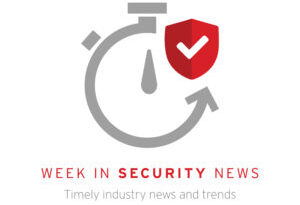Mastering Active Directory groups can streamline management, pave way for automation

On the surface, Active Directory groups are a simple and straightforward way to manage identities (users and/or computers) and assign permissions. Users or computers are added as group members, and the group is referenced in access control lists (ACL) on file shares, mailboxes, applications, or other corporate resources. But experienced admins know that this simplicity quickly goes out the window as environments scale. As group memberships grow, management of memberships becomes increasingly complex.
Over the years, Microsoft and others have developed best practices for managing groups and permissions in an Active Directory environment. These strategies are something of a lost art, but there’s value to be gained by leveraging these layers of sophistication.
Active Directory technical refresher
Before digging into technical nuances with Active Directory, let’s do a quick refresher on some terminology and structural components.
Active Directory is built as a hierarchy of domains, the entirety of which is known as a forest. Domains primarily define the scope for replication, which is a major reason why multi-domain forests exist. Active Directory is made up of many types of objects: users, computers, groups, organizational units (OU), etc. These objects and all their attributes are replicated between the domain controllers within that domain. As more objects are added to a domain, the network traffic necessary for replication grows, which can potentially become an issue if your domain spans multiple physical locations.
Forests allow you to subdivide Active Directory into domains to optimize both the security and replication scope for objects. Objects are replicated to a subset of domain controllers (those configured as global catalog servers) in other domains within the forest, but only with a subset of object attributes. Global catalog servers allow you to tune the balance between the need for replication versus the need to reach back across the domain boundary to resolve object attributes.
In cases where two domains from different forests need to share resources, domain trusts can be used to authenticate users and provide permissions for users from the foreign domain. Trusts are typically used for the purposes of a business partnership or as a first step in a merger.
Understanding group scope
Active Directory groups can be created for the purpose of either email or security, and they require a name and group members (users, computers, or other groups). In addition to these options, groups can have one of three scopes: global, universal, and domain local. These scopes define the group’s visibility within the Active Directory forest and have an impact on what objects may be members of the group.
Global groups have the widest visibility of any group scope in that they are the only group type which can be members of domain local groups in trusted external domains, and they can also be listed as members of universal or domain local groups in other domains in the same forest. While global groups can be referenced as a member in other domains, they can only contain certain types of objects from their own domain (users, computers, and other global groups). This is a key distinction because of how it impacts replication. Changes to a global group’s membership only need to be replicated within the domain, and not to global catalog servers throughout the forest.
Universal groups can be members of universal and domain local groups in domains throughout the forest, and they can have users, computers, or global and universal groups as members. Membership in universal groups may optionally be cached within the global catalog, which would entail a replication cost whenever the group membership is changed.
Domain local groups are the only group type which may include members from trusted external domains (users, computers, and global groups). Membership in a domain local group can include users, computers, and global or universal groups from any domain in the forest, as well as other domain local groups from the same domain.
Optimization goals and strategies
There are two primary reasons why it’s in your best interests to leverage best practices with Active Directory groups.
First, you can ease your administrative workload by implementing role-based access control (RBAC). At its core, the goal of RBAC is to minimize the number of changes required when adding a user or changing a user’s role. With RBAC, you should be able to add a new user to one or two groups in order to grant them permissions to all the resources they need within your organization.
Second, you can minimize the technical overhead required to assign user permissions through group membership changes. Part of this involves Active Directory replication. It also relates to things like file and share permissions, web-based or on-prem application access, and any other corporate resource group memberships may impact.
These two goals can be met almost exclusively through group nesting, which, to put it simply, is a strategic, multi-layered approach to group membership. Group nesting involves making one group a member of one or more other groups, which allows administrators to add a user or computer to a single group while gaining the resource access offered by several groups.
In order to minimize the replication overhead involved with changes to group memberships, group nesting should be limited to a specific order. In single-domain forests, accounts (users or computers) should be placed in global groups which correspond to a job role. These global groups should then be placed in domain local groups, which are used to provide a certain level of access to resources like applications or file stores. The acronym used for remembering this sequence is AGDLP (account, global, domain local, permission).
Multi-domain forests are a little more complex due to group membership restrictions and the need to minimize replication. In a multi-domain environment, the best practice is to place global groups as members in universal groups, and universal groups as members of domain local groups. The AGUDLP (account, global, universal, domain local, permission) acronym applies in multi-domain. Using this structure results in minimizing changes to the membership of global groups (minimizing replication), as most changes will be limited to the global groups.
Applying best practices
The first step in implementing these best practices is to come up with a plan, which requires an understanding of your business needs. This starts with understanding how your business groups divide up, what resources your users require access to, and how the two intersect.
Global groups for business roles can be as straightforward as one per business group (sales, engineering, HR, IT, executives) or subdivided as necessary (sales team, sales leads, sales management). The level you break roles down into depends entirely on the resources and level of access needed for these users to perform their job. Fortunately, these groups are easy to expand on as business needs change, so while there’s certainly value in planning out your needs and building in some flexibility for growth, it’s not something you need to overthink.
Domain local groups used to manage the permission and access side of the equation are a little more straightforward. Generally, for things like files and folders, there are only a few potential permission levels, and in most cases this can be broken down into things like read only, read and write, and full control. Creating a new file store will necessitate a new set of domain local groups, but once this framework is built, you’ll only need to add a few roles as group members rather than individual users. Applications and other resource types that leverage Active Directory groups can potentially add complexity, but that really depends on the application.
The glue that holds all this together is adding your global groups – which manage the role aspect of your strategy – as members of the domain local groups necessary for that role to receive the appropriate permissions for those users. For example: sales users may require the ability to view documents owned by the engineering team, so sales users would be placed in a global group, which would be given membership in a domain local group providing read-only access to engineering files. The same sales user group could be a member of a domain local group which provides read-write permissions to sales files, as well as any other permission group appropriate for their job role. New users would be placed in the group appropriate for their job role and automatically gain permission to any number of resources required for their job function.
Universal groups come into play only in Active Directory forests with multiple domains where users from one domain require access to resources in another domain. Where global groups define business roles and domain local groups correspond to permissions, universal groups can be thought of as a second layer to the business role to enhance cross-domain functionality. This strategy becomes particularly useful for performance reasons if universal group membership caching is enabled within your global catalog servers.
A final recommendation that will save your sanity is to establish a standard naming convention for each of your group types. Something like Gl-SalesTeam (group scope and job function) or SalesTeam-Role (job function and group type) helps identify both the purpose of the group and the business group that it supports. Permission groups may require a bit more detail in order to be fully descriptive, as there are a wide range of resources they could correspond to. For example, ACL-Files-Engineering-RW (access control list providing read-write access to the engineering file share) or ACL-LocalAdmin-Server1 (for local admin privileges to server1). Naming conventions will help streamline all aspects of the maintenance process, including searching and reviewing user access, and potentially automation.
Next read this:
READ MORE HERE


